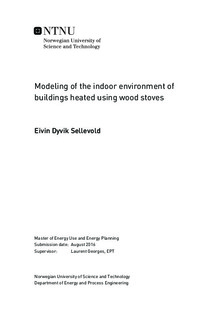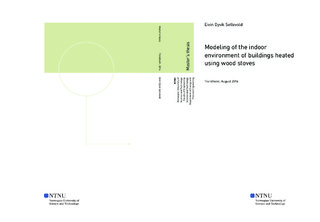| dc.description.abstract | This paper investigates the thermal plume caused by wood stoves, with the main goal of integrating wood stoves in highly insulated buildings, ensuring an acceptable thermal environment. The physical theory behind thermal plumes are reviewed as an introduction before an experiment where measurements of the physical properties of a plume are investigated, using an electric stove to simulate the effect of a wood stove. The results show that the air speed and temperature distribution of a cross-section in a plume can be described with Gaussian functions, as expected. The goal is to figure out when the plume s air speed and temperature distribution becomes self-similar, which means that a new zonal model in the program EQUA, can be used properly, unlike the previous version where there was an error in the coding. The results from the experiment gives insight about when self-similarity is achieved in plumes. | |

